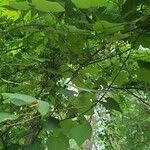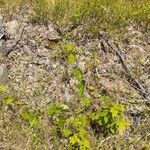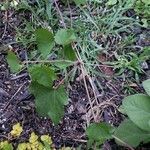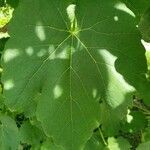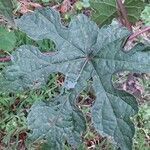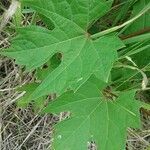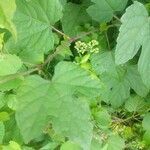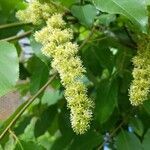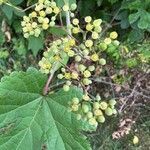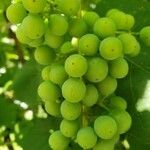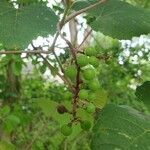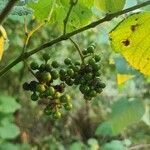Plants high climbing, sparsely branched. Branches: bark exfoliating in shreds; nodal diaphragms 1–4 mm thick; branchlets terete, tomentose, arachnoid-floccose, or glabrous, growing tips not enveloped by unfolding leaves; tendrils along length of branchlets, persistent, tendrils (or inflorescences) at only 2 consecutive nodes; nodes not red-banded. Leaves: stipules 1–4 mm; petiole ± equaling blade; blade cordate to orbiculate, 7–25 cm, unlobed to 3-shouldered or 3–5-lobed, sometimes deeply so, apex acute to short acuminate, abaxial surface glaucous, ± arachnoid or floccose, visible through hairs, hairs usually rusty, sometimes whitish, veins and vein axils sometimes hirtellous, adaxial surface glabrous or puberulent. Inflorescences 7–20 cm. Flowers functionally unisexual. Berries black, glaucous, globose, 8–20 mm diam., skin separating from pulp; lenticels absent. 2n = 38.
A grape vine. The leaves may not have lobes or can have 3-5 lobes. They are green above and hairy underneath. They have shallow teeth. The flowers are in a dense panicle. The are 5-15 cm across.
